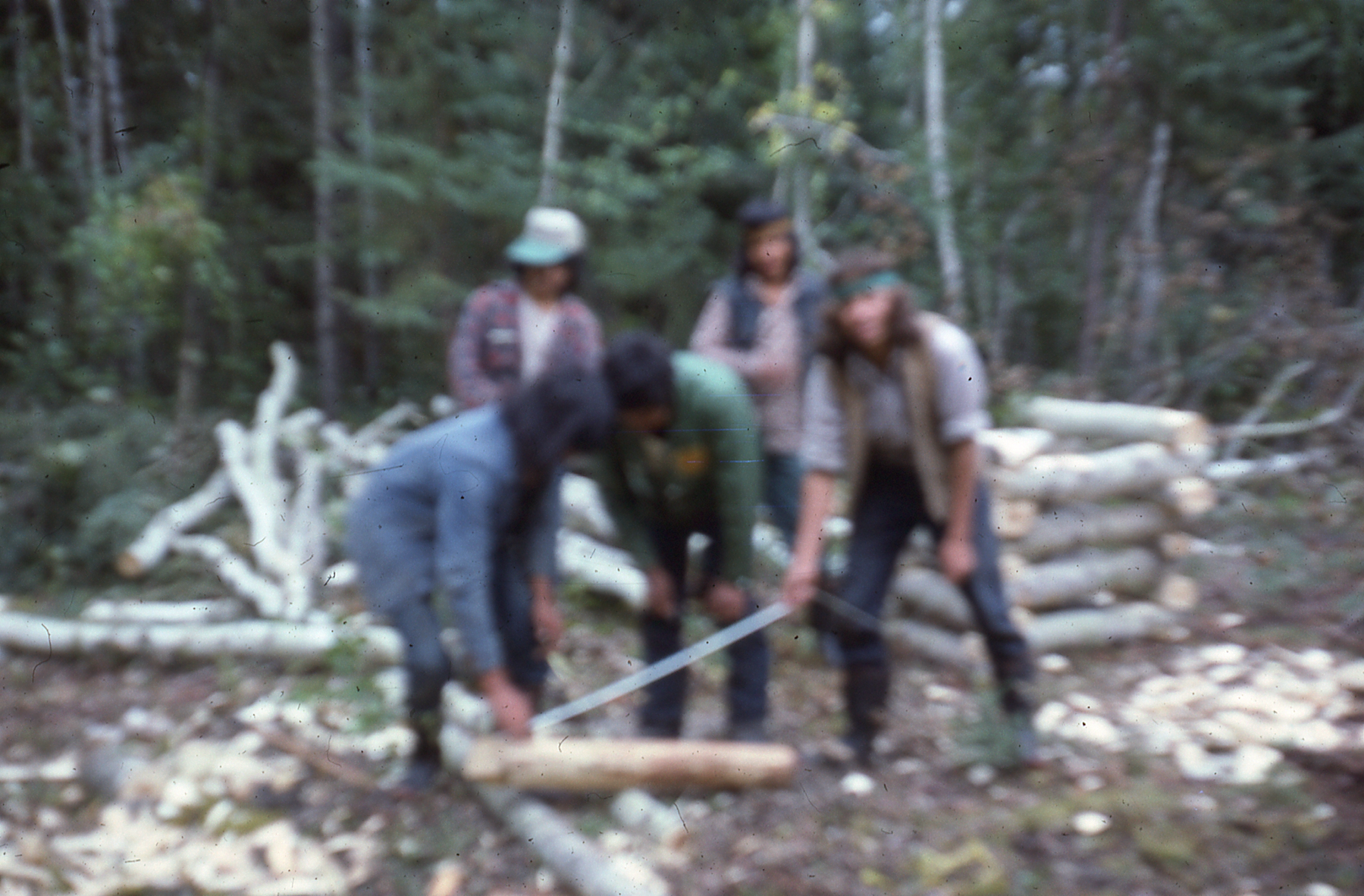I was recently presented with photos of repairs done at our northern fly-in camps at Dreyer and Norbert Lakes. The camps had always been interesting to me because they are always a popular destination among our houses for a summertime camp trip. Their popularity was something I never understood because of the camp’s lack of amenities –power and running water and ample amounts of wildlife including bears.
 I was also curious about how the Ranch came to have these two camps located 100 miles northwest of La Ronge. I found a lot of the answers in a Ranch history book Go Forward with Pride: A Historical Review of the Ranch Ehrlo Society. Everything not in the book was provided to me by talking to the current and ex-staff including Greg Mallett, a former employee of the Ranch in the 70’s and 80’s.
I was also curious about how the Ranch came to have these two camps located 100 miles northwest of La Ronge. I found a lot of the answers in a Ranch history book Go Forward with Pride: A Historical Review of the Ranch Ehrlo Society. Everything not in the book was provided to me by talking to the current and ex-staff including Greg Mallett, a former employee of the Ranch in the 70’s and 80’s.
The camps, created as part of the expansion of the Wilderness Challenge, were built by staff and youth in the early 70’s. The program was designed as a wilderness treatment centre for violent youth in danger of being transferred to adult court. Trained social workers and counselors, experienced in outdoor survival, lived with the boys to teach them socially acceptable behaviour through group living.
The program had a big work component. Youth had to build the cabins, the furniture, cut the wood, haul the water, and make use of the environment in everything that they did. The youth lived at these camps year round. School took place in the evenings after work was completed.
Between 1974 and 1976 the program grew from six youth to 60 and new sites (Norbert and Dreyer) were created.
Then, in late 1976, a resident who had a minor brush with the law told police stories of horrendous alleged abuse occurring at the camp. The program was closed pending investigation. Lots of media attention was focused of the Ranch. A public inquiry cleared the Ranch but the program did not reopen. The Ranch itself barely survived. Out-of-province referrals stopped, and resident population dropped. As a result four group homes closed. Financial recovery took several years and rebuilding credibility took much longer.
was focused of the Ranch. A public inquiry cleared the Ranch but the program did not reopen. The Ranch itself barely survived. Out-of-province referrals stopped, and resident population dropped. As a result four group homes closed. Financial recovery took several years and rebuilding credibility took much longer.
 The camps eventually opened to summer camping trips for youth and staff from Pilot Butte, Corman, Park and Buckland campuses. Today, time at the locations is in demand and youth look forward to going to the fly-in camps and experiencing the wilderness – even without showers and fridges.
The camps eventually opened to summer camping trips for youth and staff from Pilot Butte, Corman, Park and Buckland campuses. Today, time at the locations is in demand and youth look forward to going to the fly-in camps and experiencing the wilderness – even without showers and fridges.
Thanks to the repairs of Chris Shynkaruk, maintenance technician at Buckland who oversaw the repairs this spring and fall with a small work crew at both locations, the camps can continued to be enjoyed every summer.


